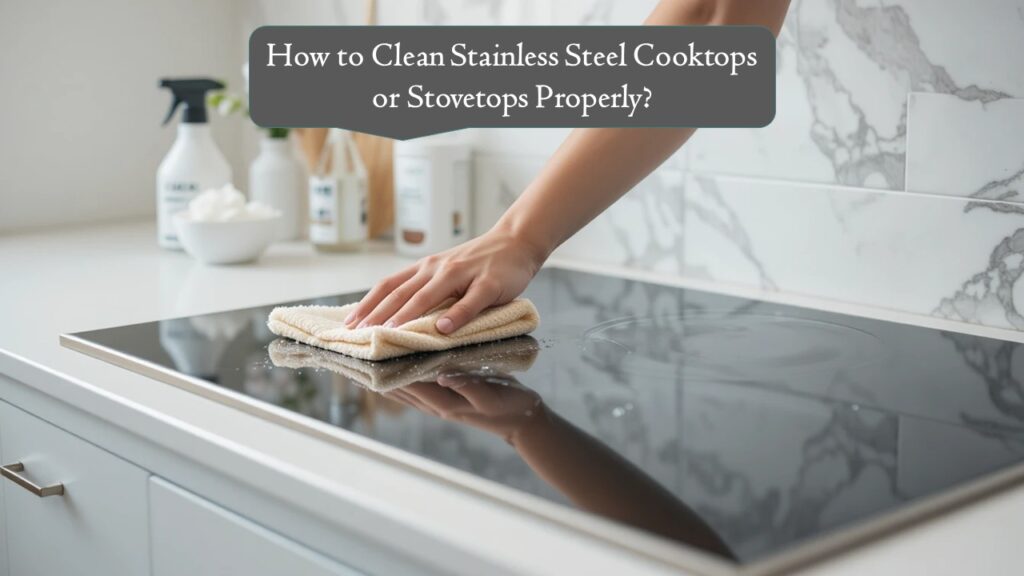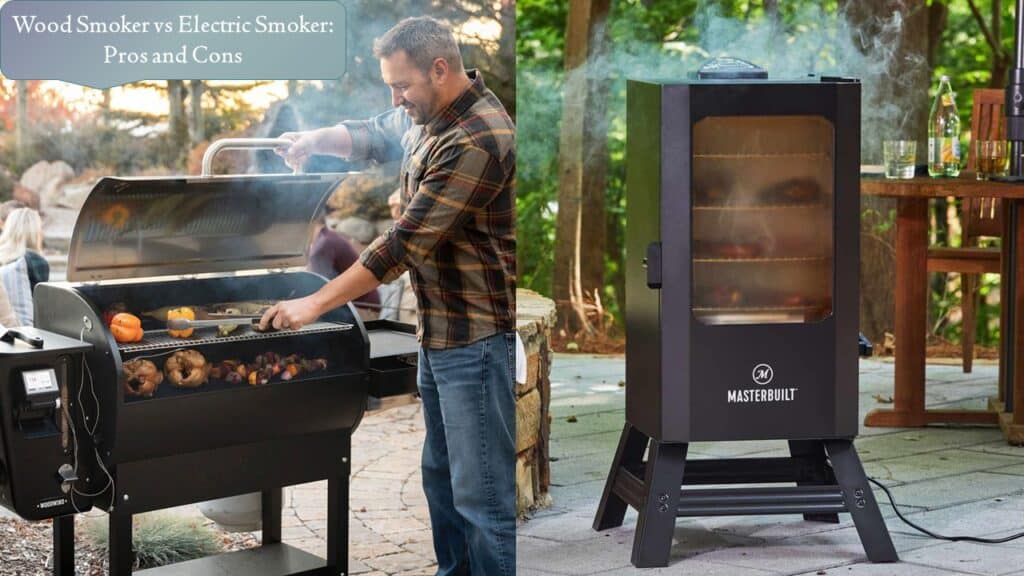There’s something so satisfying about a shiny stainless steel cooktop — until you cook your favorite meal and notice those stubborn grease splatters, burnt food marks, and water stains that never seem to go away. Stainless steel is sleek and durable, but it can quickly lose its charm if not cleaned properly. The good news? Getting your cooktop back to its original shine doesn’t require harsh chemicals or hours of scrubbing.
With the right tools and techniques, you can remove grime, restore shine, and keep your stainless steel stovetop looking brand new. Let me walk you through a simple, step-by-step guide that’s easy to follow and safe for your appliance.
What You’ll Need (Quick Checklist)
Before you start cleaning, gather a few essentials. Having everything ready makes the process smoother and helps you avoid accidental scratches.
You’ll need:
- Mild dish soap or gentle degreaser
- Warm water
- Microfiber cloths or soft sponges
- White vinegar (optional for tough grease)
- Baking soda (for burnt-on residue)
- Olive oil or stainless steel polish (for finishing shine)
- Spray bottle (optional)
- Soft toothbrush or cotton swabs (for corners and knobs)
Step-by-Step Guide: How to Clean Stainless Steel Cooktops Properly?
Step 1: Let the Cooktop Cool Down
This might sound obvious, but it’s important — never start cleaning while the cooktop is still warm. Hot surfaces can cause burns and make cleaning solutions dry too fast, leaving streaks. Always give it time to cool completely before you begin.
Step 2: Remove Burner Grates and Knobs (If Applicable)
If you have a gas cooktop, gently lift off the grates and control knobs. Soak them in warm, soapy water for 10–15 minutes. This helps loosen any grease buildup while you clean the main surface.
Tip: Avoid soaking knobs with electrical connections — instead, wipe them gently with a damp cloth.
Step 3: Wipe Away Loose Debris
Use a dry microfiber cloth or paper towel to wipe away crumbs, dust, and loose residue. This quick step prevents scratching when you apply cleaning solutions later.
Step 4: Prepare a Gentle Cleaning Solution
Mix a few drops of mild dish soap into a bowl of warm water. Dip a microfiber cloth into the solution and wring it out so it’s damp, not soaking wet.
Gently wipe the cooktop, following the grain of the stainless steel. (Yes — stainless steel has a grain, like wood!) Wiping in the direction of the grain prevents fine scratches and helps maintain that smooth, reflective finish.
Step 5: Tackle Stubborn Grease and Stains
For those sticky, burnt-on spots, you’ll need a little extra help. There are two safe methods to handle this:
Option 1: Use White Vinegar
Spray a light mist of white vinegar directly on the greasy spots. Let it sit for 3–5 minutes. The vinegar naturally breaks down oil and leaves a streak-free shine. Wipe clean with a soft cloth.
Option 2: Make a Baking Soda Paste
If you’re dealing with burnt food or tough residue, mix baking soda with a few drops of water until it forms a thick paste. Apply it to the affected area and let it rest for 10 minutes. Then, gently rub using a soft sponge or cloth. Wipe away any remaining paste with a damp microfiber towel.
Pro Tip: Never use steel wool or abrasive scrubbers — they’ll scratch the stainless surface and ruin the polish.
Step 6: Rinse and Dry Thoroughly
Once all grease and residue are removed, dampen a clean microfiber cloth with warm water and wipe the entire surface to remove soap or vinegar traces. Follow up immediately with a dry cloth to prevent water spots and streaks.
Step 7: Polish for a Streak-Free Shine
Here’s the secret to that “brand new” look: polishing.
You can use a few drops of olive oil, mineral oil, or a stainless steel cleaner.
- Apply a small amount to a microfiber cloth.
- Buff the surface gently, following the direction of the grain.
- Wipe off any excess to leave a smooth, gleaming finish.
This not only enhances shine but also adds a light protective layer that repels future smudges and fingerprints.
Step 8: Clean and Reinstall Burner Grates and Knobs
Rinse your grates and knobs after soaking, then dry them completely before putting them back. Any moisture left behind can cause spotting or even rust over time. Once everything is back in place, your cooktop should look fresh, spotless, and ready for the next meal.
Extra Tips to Keep Stainless Steel Cooktops Clean Longer
Keeping your cooktop spotless doesn’t require deep cleaning every day — just a few smart habits can make a big difference:
- Wipe spills immediately. The longer grease or sauces sit, the harder they are to remove.
- Use a soft cloth daily. A quick once-over with a damp microfiber cloth prevents buildup.
- Avoid harsh chemicals. Bleach, ammonia, or oven cleaners can damage the protective coating.
- Always dry after cleaning. Water spots are stainless steel’s biggest enemy.
- Use liners or splatter guards. These reduce mess when cooking oily or saucy foods.
- Buff once a week. A light polish maintains shine and prevents dullness.
Common Mistakes to Avoid When Cleaning Stainless Steel Cooktops
Even well-intentioned cleaning can go wrong if you’re not careful. Here are the most common mistakes people make — and how to avoid them:
- Using steel wool or rough sponges: These leave permanent scratches.
- Wiping in circular motions: Always follow the grain direction for a uniform finish.
- Skipping the rinse step: Soap residue can dull the shine over time.
- Spraying cleaners directly: Always spray onto a cloth first to control moisture near knobs or seams.
- Forgetting to dry: Air drying leaves streaks and mineral deposits.
Avoiding these simple mistakes ensures your cooktop not only looks clean but lasts longer too.
Natural Cleaning Alternatives (Eco-Friendly Options)
If you prefer chemical-free cleaning, stainless steel is easy to maintain naturally. Here are a few safe, eco-friendly combinations you can try:
- Vinegar and Water Spray: Mix equal parts vinegar and water in a spray bottle. Great for quick daily wipe-downs.
- Baking Soda and Lemon Juice Paste: Perfect for deep cleaning greasy spots — the lemon helps cut oil and leaves a fresh scent.
- Olive Oil Finish: After cleaning, a tiny dab of olive oil restores shine without any commercial polish.
These natural options are safe, inexpensive, and gentle on your cooktop.
Conclusion:
Cleaning a stainless steel cooktop might sound tedious, but once you get into the routine, it becomes second nature. With just a few simple tools, gentle cleaners, and mindful care, you can keep your cooktop spotless, streak-free, and gleaming for years.
Whether it’s a quick wipe after breakfast or a deep clean on the weekend, these easy steps make maintaining stainless steel effortless — and your kitchen will always look guest-ready.
Remember, the secret to that perfect shine isn’t just cleaning — it’s cleaning the right way.







